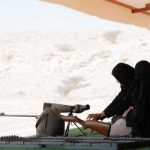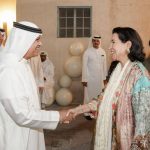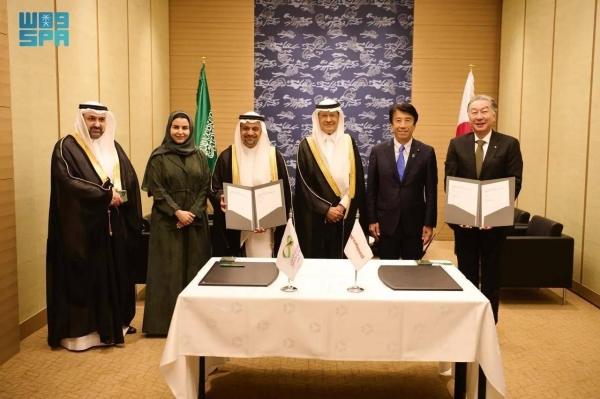Saudi Arabia has achieved new world records in reducing the cost of producing electricity from wind energy, thanks to the Al-Ghat and Wa’ad Alshamal projects. During the signing of energy agreements on the sidelines of the Saudi-Japan Vision 2030 Business Forum in Tokyo, Minister of Energy Prince Abdulaziz bin Salman announced that these projects would support the Kingdom’s plans to raise the share of renewable energy to 50 percent of the electricity mix by 2030. As part of Round 4 of the Saudi National Renewable Energy Program (NREP), two power purchase agreements were signed with the consortium led by Japan’s MARUBENI Corporation to procure power from AlGhat Wind Project (600 MW) and Wa’ad Alshamal Wind Project (500MW).
Both projects achieved new world records for wind energy projects in terms of the total cost of electricity production. Prince Abdulaziz expressed his gratitude to Custodian of the Two Holy Mosques King Salman and Crown Prince Mohammed bin Salman for their encouragement, support, and follow up to enable achieving the Vision 2030 targets in the energy sector. The AlGhat project achieved a new world record low cost of electricity production from wind power at 1.56558 cents/kWh, while Wa’ad Alshamal project achieved the second world record low for wind power at 1.70187 cents/kWh. The electricity produced from both projects is sufficient to power 257,000 residential units per year, emphasizing the significance of these projects in enhancing energy efficiency in Saudi Arabia.
The National Renewable Energy Program (NREP) is a strategic initiative under Vision 2030 and the King Salman Renewable Energy Initiative. The program aims to maximize the potential of renewable energy in Saudi Arabia by diversifying local energy sources, stimulating economic development, and providing sustainable economic stability. The goal is to establish the renewable energy industry and support the advancement of this promising sector, while working to fulfill the Kingdom’s commitments to reducing carbon dioxide emissions. The program sets out an organized and specific roadmap towards achieving these objectives by harnessing renewable energy resources in the Kingdom and displacing liquid fuels in the power sector to achieve an energy mix where the share of renewables is around 50 percent by 2030.
According to data from the King Abdullah Petroleum Studies and Research Center (KAPSARC), Saudi Arabia plans to produce 58.7 gigawatts of renewable energy by 2030, with the solar source representing about 40 gigawatts of this total. The country’s efforts in the renewable energy sector are aimed at supporting economic development, reducing carbon emissions, and enhancing energy efficiency. Through projects like the AlGhat and Wa’ad Alshamal wind projects, Saudi Arabia is making significant strides towards achieving its Vision 2030 targets and establishing itself as a global leader in renewable energy production. These projects not only contribute to the Kingdom’s energy goals but also set new world records in the cost-efficiency of wind energy production, showcasing Saudi Arabia’s commitment to sustainable development and environmental stewardship.
In conclusion, Saudi Arabia’s achievements in reducing the cost of producing electricity from wind energy through projects like AlGhat and Wa’ad Alshamal are a testament to the Kingdom’s commitment to renewable energy and sustainable development. The National Renewable Energy Program plays a crucial role in diversifying energy sources, stimulating economic growth, and reducing carbon emissions in line with Vision 2030 objectives. With plans to produce 58.7 gigawatts of renewable energy by 2030, Saudi Arabia is making significant progress towards its goal of increasing the share of renewables in the electricity mix to 50 percent. By setting new world records in wind energy cost-efficiency, the Kingdom is not only leading the way in renewable energy production but also demonstrating its dedication to building a greener and more sustainable future.











